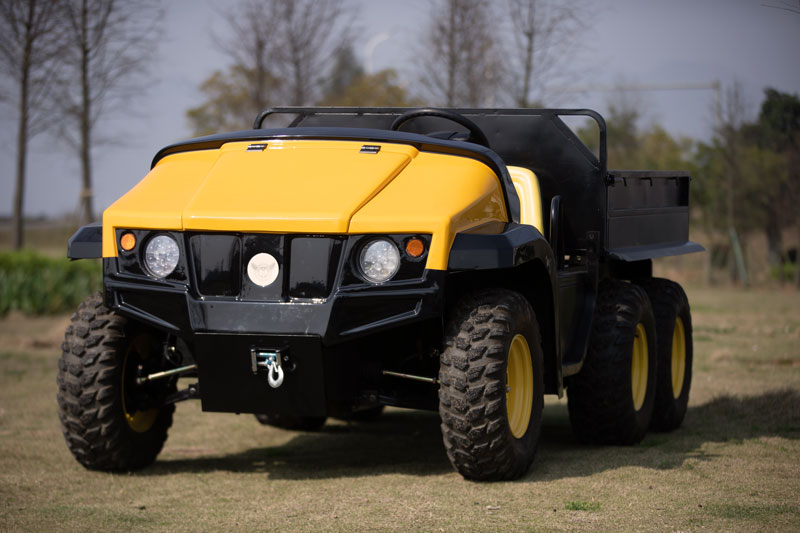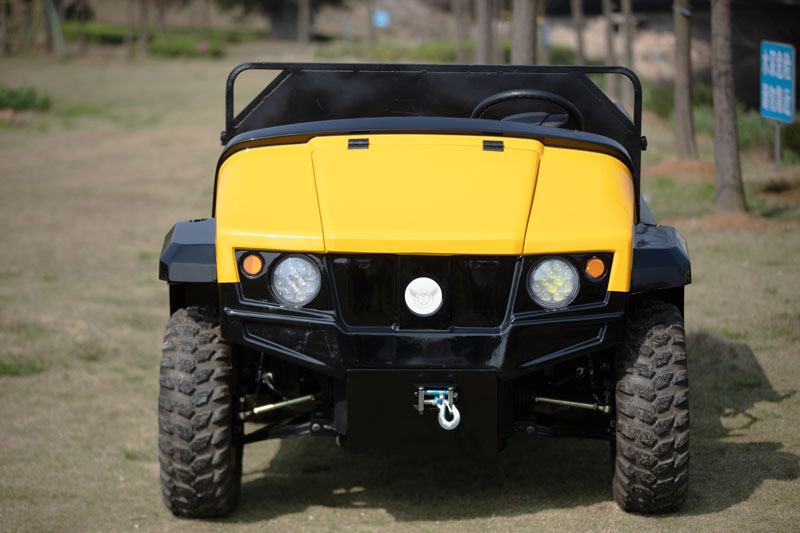UTVs (Utility Task Vehicles) are versatile off-road vehicles widely used in agriculture, hunting, emergency rescue, and other scenarios. UTVs can be categorized based on the number of wheels they have, typically into 4-wheel and 6-wheel models. So, what are the differences between a 6-wheel UTV and a 4-wheel UTV? How do they compare in terms of load capacity, stability, slope climbing, and traction? This article will provide a detailed comparison from these perspectives.


Load Capacity
The 6-wheel UTVs clearly have a significant advantage in load capacity. With an additional two wheels, the bed and chassis of the 6-wheel UTV can bear more weight, usually ranging from 500 kg to 1000 kg. On the other hand, the load capacity of 4-wheel UTVs is relatively smaller, generally between 300 kg and 500 kg. For tasks requiring the transport of large amounts of materials or heavy equipment, such as farm work or construction site hauling, the load advantage of the 6-wheel UTV is evident.
Stability
Not only do the extra wheels increase the load capacity, but they also enhance the stability of the 6-wheel UTV. The additional wheels provide a greater ground contact area, making the vehicle more stable on various complex terrains. This is especially noticeable when making sharp turns or driving on a slanted slope; the 6-wheel UTV is less susceptible to tipping or losing control. In contrast, the 4-wheel UTV is slightly less stable, particularly at high speeds or sharp turns, requiring more caution from the driver.
Slope Climbing
When it comes to slope climbing capabilities, both the 4-wheel and 6-wheel UTVs have their strengths. The advantage of the 6-wheel UTV lies in the additional wheels offering better traction, performing exceptionally well on soft or slippery ground. However, its heavier weight can limit its power on particularly steep slopes. Although the 4-wheel UTV may not match the 6-wheel UTV in traction under some extreme conditions, its relatively lighter body and more direct power transmission mean it performs comparably on general slopes.
Traction
The traction of a 6-wheel UTV is undoubtedly stronger than that of a 4-wheel UTV. With an extra axle, the 6-wheel UTV excels at pulling heavy loads, whether in muddy fields or snow-covered mountain roads. Although the 4-wheel UTV shows some limitations in traction, it can still handle pulling standard loads on flat and dry ground.
Comprehensive Comparison
Overall, both the 6-wheel and 4-wheel UTVs have their pros and cons. The 6-wheel UTV excels in load capacity and stability, making it suitable for high-load and high-stability tasks. Conversely, the 4-wheel UTV stands out in flexibility and power transmission, making it ideal for daily patrol or lightweight tasks. The choice of model depends on specific usage needs and environmental conditions.
By understanding these differences, users can make more informed decisions when selecting a UTV that best meets their requirements.
Post time: Jul-01-2024

